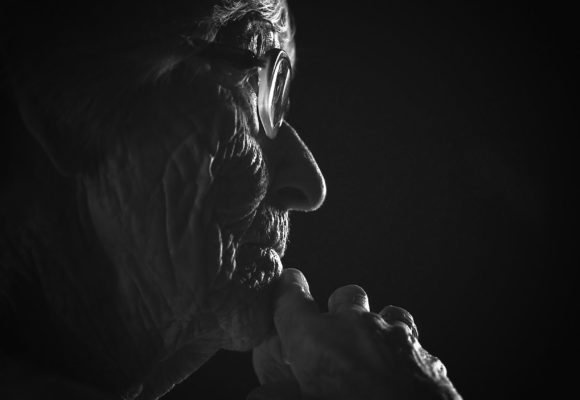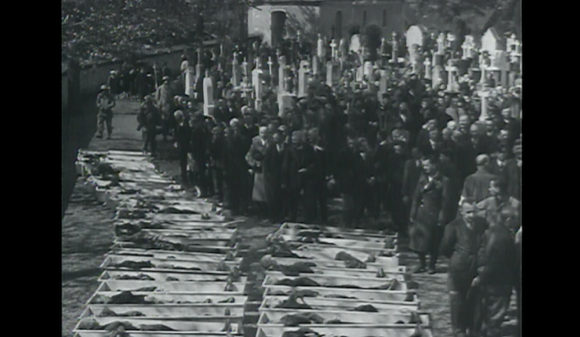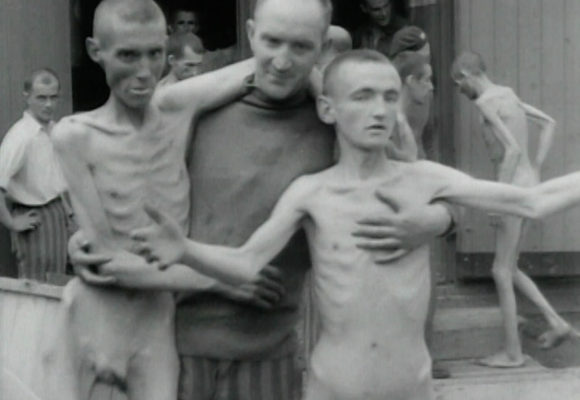Art journalist. Holds a Master’s Degree from Tokyo University of the Arts with a major in Art. Part-time lecturer of the Joshibi University of Art, the Kokugakuin University and the Tokyo University of the Arts. Author of “The Secret of Western Paintings” (Asahi Press Co., Ltd.), and has co-authored many books including “Western Museum”, “Weekly Museum” (Shogaukan Inc.), “History of Nude in Art” (Bijutsu Shuppan-Sha Co., Ltd.), “The Book that helps you Understand Contemporary Art” (Yousensha Co., Ltd.), etc.. Traslator of ” A Concise History of Modern Sculpture ” by H. Read (Gensousha Ltd.), ” Urban Space Art ” by C. Grout (Kajima Institute Publishing Co., Ltd), ” Art & Telematics ” by R. Ascott (NTT Publishing Co., Ltd), ” Leonardo Da Vinci ” by M · Kemp (Otsukishoten), ” But is this art? ” by C .Freeland (Brucke Publishing Inc.) etc..
A nightmare informed by indifference, ignorance and opportunism
Are we about to repeat the events of the 20th century?
Her face is furrowed with deep wrinkles. She sometimes closes her eyes, and every now and then she puts her hands on her cheeks and covers her face. Brunhilde Pomsel was born in 1911, and at the time of this interview, in which she breaks her 70-year-long silence and speaks with a faltering voice, she was 103 years old. For the best part of the 113 minutes of this movie, the viewer sits looking at the face as it has been carved during those 103 years. When the Nazis seized power in Germany in 1933, Pomsel joined the party in order to find employment, without having any particular political creed. Through a certain party member’s connections she found work as a secretary at the national broadcasting office, before eventually acquiring the position of minister Goebbels’s secretary at theReich Ministry of Public Enlightenment and Propaganda in 1942. As only one of several secretaries, she was blessed with a high-paying job, and handled the work she was entrusted with in a diligent and unquestioning manner.

©2016 BLACKBOX FILM & MEDIENPRODUKTION GMBH
“Ididn’t do anything but type in Goebbels’s office […] and I had no idea of what was behind all that. Well, very little, anyway.I don’t think that I am guilty.”Did she really have no idea? And what does “very little”mean? One feels like probing. Pomsel knew about the Kristallnacht in 1938, and about the scheduled execution of Christoph Probst and Hans and Sophie Scholl for their involvement in the White Rose resistance movement in 1943. But even though the records of the Scholl siblings’trial passed through her hands, she followed the instructions of her superior at the propaganda ministry “not to steal a glance,”and stored the documents away without looking at them. ”The most important thing was to prove worthy ofour superior’s trust,”she recounts openly, adding that she was proud of herself doing so. While noticing that her Jewish friend Eva had disappeared all of a sudden, she didn’t even try to find out why. When Germany lost the war, she was taken away by the Soviet troops, and imprisoned for five years in former concentration camps. She further explains that she learned about the Holocaust, and that Eva was killed in Auschwitz in 1945 only after her release.

©2016 BLACKBOX FILM & MEDIENPRODUKTION GMBH
The movie is titled “A German Life,”which means that it tells the story of “one German person’s life,”and evokes the idea of a German nation that was mostly just as “indifferent and ignorant”as Brunhilde Pomsel at the time. Now that’s a situation that certainly applies also to the majority of the Japanese people at the time when the Sino-Japanese War developed into the Pacific War…”People today often say this. ‘If we had lived back then, we would’ve done something.’‘We’d surely have rescued the abused Jewish people.”[…] But I think they would have done just the same. It was as if the whole country was under a glass dome at the time. We all were in a big concentration camp ourselves.”
There is no narration and no music added to communicate the directors’subjective views, only footage that is entirely in black and white. The archival audio and video recordings that are interspersed between the shots of Pomsel’s face project the naked fact of what occurred at the time. Audio recordings include parts of Goebbels’s “total war speech”on February 18, 1943, and Pomsel, who attended the speech, remembers being thrilled at the idea that one man can excite the enthusiasm of such a large audience. However she testifies –not without memory lapses and contradictions –that she was indifferent about politics, and only interested in love and a better income. “I didn’t want to see it, and I didn’t want to know about it.”Everything, including the contradictions, is exposed in the movie as it tries to convey to the viewer the weight of the words that broke the silence of seven decades: ”This is not a matter of the past.”

©2016 BLACKBOX FILM & MEDIENPRODUKTION GMBH
This summer, the Tokyo Metropolitan Art Museum is showing an exhibition commemorating the 50th anniversary of the death of Léonard Tsuguharu Foujita, who was accused of being a “war painter.” (https://www.tobikan.jp/exhibition/2018_foujita.html) Along with the movie, this is another show that I’d advise young people to go and see –people in their twenties and thirties, whomMinister of Finance Taro Aso referred to unreservedly and with an air of importance as “the ‘generation of non-newspaper-readers’that support the Liberal democratic Party.”Things that are happening, or that are about to happen, are difficult to grasp when being embroiled in the currents of the time. But still, it is a question of how resistance is possible. Brunhilde Pomsel’s wrinkled face is as a mirror in which we can see our very selves.
Translated by Andreas Stuhlmann
INFORMATION
"A GERMAN LIFE"
Directed by Christian Krönes, Olaf S. Müller, Roland Schrotthofer, Florian Weigensamer
2018.6.16 - 8.3
Documentary / 2016 / 113 min
German / Japanese Subtitles
Also available in over 20 countries around the world is a book by political scientist/sociologist Thore D. Hansen, containing a transcript of the full interview of the directors with Brunhilde Pomsel.
German edition: "Ein Deutsches Leben: Was uns die Geschichte von Goebbels Sekretaerin fuer die.
Gegenwart lehr”, (Europa Verlag GmbH)
English edition: "The Work I Did: A Memoir of the Secretary to Goebbels”, (Bloomsbury Publishing PLC)









